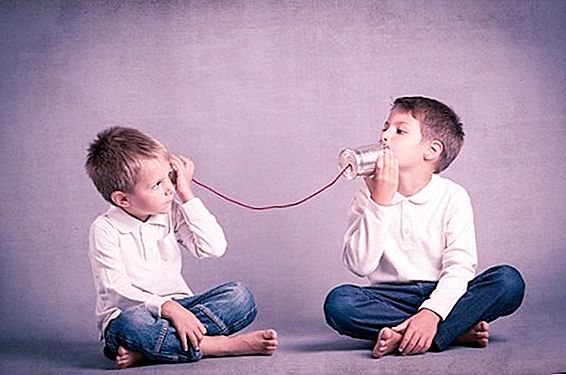Man is not only a biological creature, but also a social one, therefore he needs to satisfy the need for food and society. What is communication, what are its types and what does it bring to modern society?

What is communication?
In general, if we consider the term "communication" itself, then it came to the Russian language from the word communico (lat.), Which means "joint" or "common." In connection with this definition, they began to say that communication is communication.
In other words, communication is a situation in which two or more people talk to each other on topics they know. At the same time, people during a conversation can argue, give each other advice, express their own opinion or express their thoughts in a different way. The interlocutor in the process of communication will accept the incoming information and provide his response in response.
Classification and structure
Communication is a rather complicated concept that has its own structure. All communication can be divided into two main groups - this is communication between several people (it’s interpersonal) and communication between companies (it’s also organizational). Interpersonal communication is divided, in turn, into informal and formal.
From all these names of groups and subgroups, it becomes clear that there are types of communication conducted according to certain rules, with the necessary intonation, as well as with the official character inherent in certain events.
And there is informal communication, in which people communicate with friends, family or just acquaintances, without observing any requirements or rules. In informal communication (communication) with other people, a person behaves naturally and naturally.

Organizational communication is divided into external, occurring between any organization and the environment, and internal, in which communication is built between departments in a particular company.
But here there is a division in communication - it is horizontal and vertical. With horizontal communication, communication occurs between departments that are on the same level, and with vertical communication, between subordinates and superiors.
From all this we can conclude that communication is a definition that exists in any area of human life and requires a certain understanding and approach.
Key concepts from the field of communication
The main definitions related to the field of communication include the following:
- The culture of speech is the correct and correct use of the basic language elements of communication in all respects. Anyone who knows the rules of the Russian language and Russian speech knows how to use words correctly and how to behave depending on the situation.
- Speech communication is the purposeful or random use of speech constructions for voicing your own opinion, as well as for supporting the topic of conversation.
- Speech behavior - the use of certain verbal turns depending on a specific situation (at school, in the family, with friends, etc.).
- A speech event consisting of two elements is a certain life situation or setting within which a dialogue takes place, as well as the language itself, through which a conversation is made.
- Speech activity is a purposeful, isolated impact on one or more citizens through language.
From all this, we can conclude that communication is a definition consisting of a large number of language structures that take part in the exchange of information data.
Verbal and nonverbal communication
Communication (communication) is a complex and diverse process of establishing and further developing contacts between several people. Communication is generated by the need for activity and the exchange of information data.
There are two main types of communication:
- Verbal. Verbal communication is understood as communication in which people exchange information using sentences and words. Such communication takes place in written or oral form, and the output is words and sounds.
- Nonverbal. Non-verbal communication between people is an expression of emotions and non-verbal actions - facial expressions, gestures, as well as intonation, body position and other data.
An important point: the types and concepts of non-verbal communication tools are an interesting topic for research, because it is non-verbal communication that allows you to significantly feel the interlocutor and get his location.
How partners interact with each other during communication
When communicating between the interlocutors, there is a subconscious dominance of one of the interlocutors. A dominant person is able to convince in something or, conversely, to dissuade another. He can also give advice or condemn for misconduct. Based on all this, 4 scientific methods of influencing one person on another can be distinguished:
- Infection. These are situations in which a person is involuntarily, unconsciously exposed to a certain mental state. That is, these are cases in which a partner directly infects another person with certain ideas that fill everything else.
- Suggestion. By suggestion is meant the purposeful and unreasonable influence of one person on another. Very often you can find a similar method of communication in stores - some sellers are able to literally stick it in and force them to buy certain goods.
- Conviction. This method is based, first of all, on the fact that through the use of arguments and arguments to achieve a positive or negative action about the person receiving the information. That is, one person tells the other person reasonable information in order for the interlocutor to draw the necessary conclusions and make certain actions.
- Imitation. Compared with infection and suggestion, imitation differs from both of these actions not by simply accepting the traits of the interlocutor, but by reproducing the behavior. That is, a person tries to behave and speak as his interlocutor does. Practical benefit - persuasion and emancipation of the interlocutor during communication.
Knowing all these tricks, a person can, during communication, if not manipulate the interlocutor, then at least find a common language with him, regardless of topic.

An important point: regardless of the method of communication, its main goal is to convey the necessary and important information data in such a way that the other person (interlocutor) realizes what exactly is being discussed in the dialogue. However, the use of certain speech turns and elements of non-verbal communication will not give any guarantees that the person has accepted and understood the information.
Basic elements of communication
There are 4 important links in communication processes:
- recipient - one who listens to and perceives the information received;
- communication flow - means, methods and methods of transmitting information;
- message - information conveyed to the interlocutor;
- sender - a person who sends and brings the necessary information to another person (recipient).
It follows from this that the definition of communication and communicative processes speaks of their complementarity.

